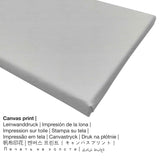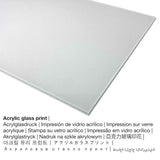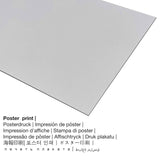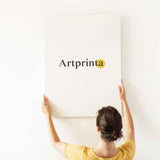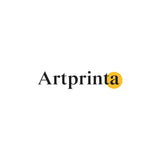Piero di Cosimo, 1494 - The Return from the Hunt - fine art print
Tax included. Shipping calculated at checkout.
The print product offering
The Return from the Hunt was created by Piero di Cosimo in 1494. The original measures the exact dimensions: 27 3/4 x 66 1/2 in (70,5 x 168,9 cm). Tempera and oil on wood was used by the artist as the technique for the artpiece. This artwork can be viewed in in the The Metropolitan Museum of Art's art collection, which is one of the world's largest and finest art museums, which includes more than two million works of art spanning five thousand years of world culture, from prehistory to the present and from every part of the globe.. With courtesy of: The Metropolitan Museum of Art, New York, Gift of Robert Gordon, 1875 (public domain license). : Gift of Robert Gordon, 1875. On top of that, alignment is landscape and has a side ratio of 5 : 2, which implies that the length is two and a half times longer than the width. Piero di Cosimo was a male painter from Italy, whose artistic style can be classified as Early Renaissance. The Italian artist was born in the year 1461 in Florence, Firenze province, Tuscany, Italy and died at the age of 60 in the year 1521.
Order the item material you will hang up on your walls
We offer a range of different materials and sizes for every product. The following options are available for individualization:
- The canvas print: The UV printed canvas stretched on a wood stretcher frame. What is more, canvas produces a lively and comfy feeling. Canvas prints are relatively low in weight, which means that it is easy and straightforward to hang up the Canvas print without any wall-mounts. Because of thatcanvas prints are suitable for all kinds of walls.
- Aluminium dibond print: An Aluminium Dibond print is a material with an outstanding depth. The non-reflective surface make a modern look. The colors are bright and vivid in the highest definition, the fine details of the print appear crisp and clear, and you can feel the matte appearance of the surface.
- Printed acrylic glass (with real glass coating on top): The print on acrylic glass, which is often denoted as a plexiglass print, makes your favorite original work of art into great wall décor and forms a good alternative option to canvas and dibond fine art replicas. With an acrylic glass art print sharp contrasts and also minor details become more identifiable due to the granular tonal gradation. The real glass coating protects your custom art replica against light and external influences for many years to come.
- Printed poster (canvas material): A poster is a printed canvas with a nice finish on the surface, that resembles the original work of art. A print poster is perfectly used for framing your art replica with a special frame. Please note, that depending on the size of the canvas poster print we add a white margin 2-6cm round about the print in order to facilitate the framing with your custom frame.
Legal note: We try everything to describe our products in as much detail as possible and to demonstrate them visually in our shop. Please keep in mind that the colors of the printing material and the printing might diverge slightly from the representation on the device's monitor. Depending on your settings of your screen and the quality of the surface, not all color pigments are printed one hundret percent realistically. Since the art reproductions are processed and printed manually, there might also be slight variations in the size and exact position of the motif.
About this product
| Print product type: | art print |
| Reproduction: | reproduction in digital format |
| Manufacturing method: | UV direct print (digital printing) |
| Manufacturing: | produced in Germany |
| Type of stock: | on demand production |
| Intended usage: | wall decoration, art print gallery |
| Orientation of the image: | landscape alignment |
| Image aspect ratio: | (length : width) 5 : 2 |
| Side ratio implication: | the length is two and a half times longer than the width |
| Item material variants: | metal print (aluminium dibond), poster print (canvas paper), acrylic glass print (with real glass coating), canvas print |
| Canvas print (canvas on stretcher frame) options: | 50x20cm - 20x8", 100x40cm - 39x16", 150x60cm - 59x24", 200x80cm - 79x31" |
| Acrylic glass print (with real glass coating) sizes: | 50x20cm - 20x8", 100x40cm - 39x16", 150x60cm - 59x24", 200x80cm - 79x31" |
| Poster print (canvas paper) size options: | 100x40cm - 39x16" |
| Dibond print (alumnium material) sizes: | 50x20cm - 20x8", 100x40cm - 39x16" |
| Art print framing: | without frame |
Background information on the original piece of art
| Name of the piece of art: | "The Return from the Hunt" |
| Artwork classification: | painting |
| Generic term: | classic art |
| Temporal classification: | 15th century |
| Created: | 1494 |
| Approximate age of artwork: | around 520 years old |
| Original medium of artwork: | tempera and oil on wood |
| Artwork original size: | 27 3/4 x 66 1/2 in (70,5 x 168,9 cm) |
| Museum / collection: | The Metropolitan Museum of Art |
| Location of museum: | New York City, New York, United States of America |
| Website: | www.metmuseum.org |
| Artwork license type: | public domain |
| Courtesy of: | The Metropolitan Museum of Art, New York, Gift of Robert Gordon, 1875 |
| Creditline of artwork: | Gift of Robert Gordon, 1875 |
About the painter
| Artist: | Piero di Cosimo |
| Other artist names: | Piero di Cosimo, Piero da Cosimo, Piero di Lorenzo di Piero d'Antonio, di cosimo piero, Piero di Lorenzo, P. di Cosiano, Piero, Pietro da Cosimo, Cosimo Piero di, Lorenzo Piero di, Di Lorenzo |
| Gender: | male |
| Nationality of artist: | Italian |
| Professions of the artist: | painter |
| Home country: | Italy |
| Artist classification: | old master |
| Art styles: | Early Renaissance |
| Lifetime: | 60 years |
| Born in the year: | 1461 |
| Born in (place): | Florence, Firenze province, Tuscany, Italy |
| Died in the year: | 1521 |
| Died in (place): | Florence, Firenze province, Tuscany, Italy |
This text is protected by copyright © , www.artprinta.com (Artprinta)
(© - The Metropolitan Museum of Art - www.metmuseum.org)
Dating about 1507–8, these companion panels showing a hunt by men and satyrs and their return from the hunt are among the most singular works of the Renaissance. Their principal inspiration was the fifth book of the De Rerum Natura by the Epicurean poet and philosopher Lucretius (ca. 99–55 B.C.). A manuscript of Lucretius’s work was discovered in 1417 and published in Florence in 1471–73. Lucretius believed that the workings of the world can be accounted for by natural rather than divine causes and he put forward a vision of the history of primitive man and the advent of civilization. For more information about these two paintings, including the dispute about their function and patron, visit metmuseum.org.


